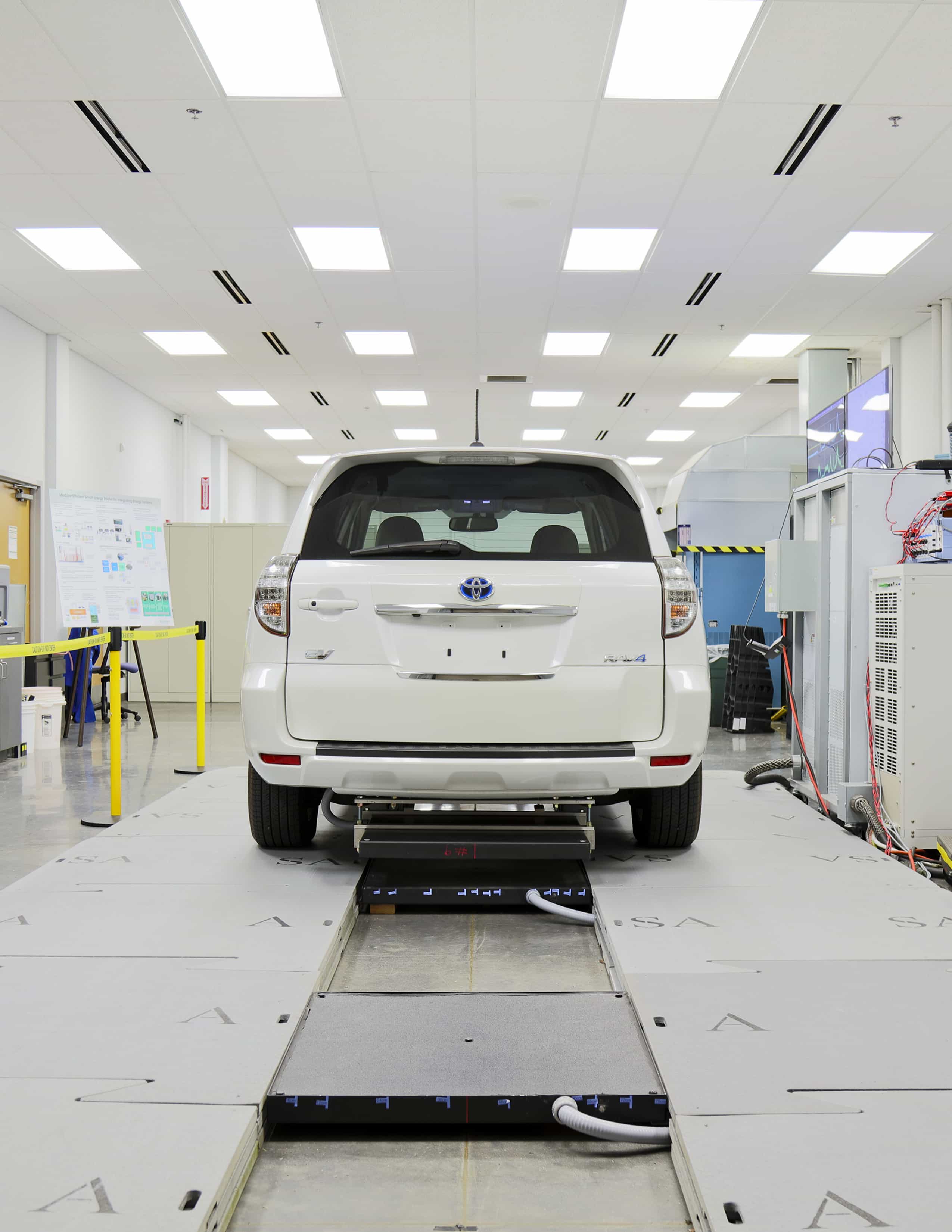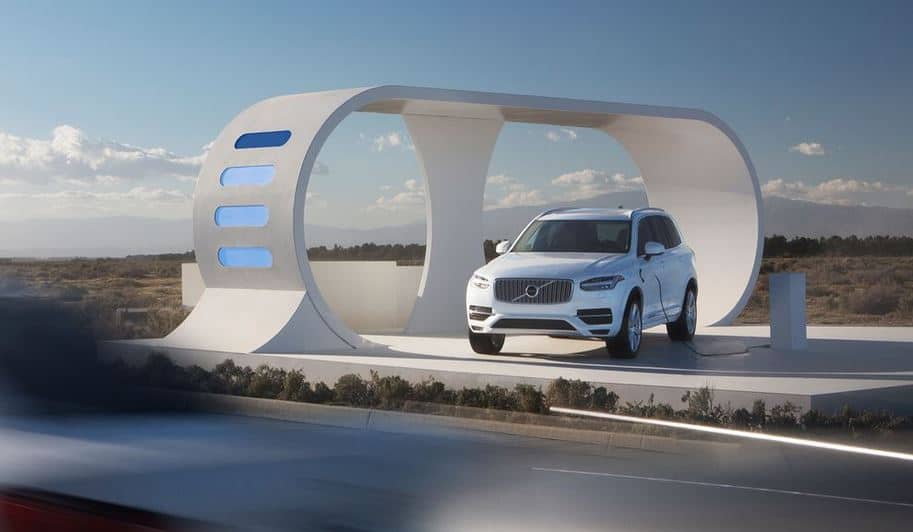 A 20-kilowatt wireless charging system demonstrated at the Department of Energy’s Oak Ridge National Laboratory has achieved 90 percent efficiency at three times the rate of the plug-in systems commonly used for electric vehicles today. Wireless charging is a key feature for enabling electric vehicles.
A 20-kilowatt wireless charging system demonstrated at the Department of Energy’s Oak Ridge National Laboratory has achieved 90 percent efficiency at three times the rate of the plug-in systems commonly used for electric vehicles today. Wireless charging is a key feature for enabling electric vehicles.
This ability can help accelerate the adoption and convenience of electric vehicles. Industry partners from Toyota, Cisco Systems, Evatran, and Clemson University International Center for Automotive Research contributed to the technology development demonstrated today at ORNL.
ORNL’s power electronics team achieved this world’s first 20-kilowatt wireless charging system for passenger cars by developing a unique architecture that included an ORNL-built inverter, isolation transformer, vehicle-side electronics and coupling technologies in less than three years. For the demonstration, researchers integrated the single-converter system into an electric Toyota RAV4 equipped with an additional 10-kilowatt hour battery.
The researchers are already looking ahead to their next target of 50-kilowatt wireless charging, which would match the power levels of commercially available plug-in quick chargers. Providing the same speed with the convenience of wireless charging could increase consumer acceptance of electric vehicles and is considered a key enabler for hands-free, autonomous vehicles. Higher power levels are also essential for powering larger vehicles such as trucks and buses.
As the researchers advance their system to higher power levels, one of their chief considerations is safety.
The high-frequency magnetic fields employed in power transfer across a large air gap are focused and shielded. magnetic fringe fields decrease rapidly to levels well below limits set by international standards, including inside the vehicle, to ensure personal safety.”
Convenience and simplicity are at the heart of the ORNL system, which places a strong emphasis on radio communications in the power regulation feedback channel augmented by software control algorithms. The result is minimization of vehicle on-board complexity as ORNL and partners pursue the long-range goal of connected vehicles, wireless communications and in-motion charging. While the team’s initial focus has been static, or motionless, wireless charging, the researchers also evaluated and demonstrated the system’s dynamic charging capabilities.
Energy Efficiency and Renewable Energy’s Vehicle Technologies Office provided funding for this competitively-selected project as part of a broad portfolio in support of DOE’s EV Everywhere Grand Challenge, which aims to make plug-in electric vehicles as affordable to own and operate as today’s gasoline-powered vehicles by 2022.
Toyota provided several vehicles for the research, including RAV4s, a Scion and a Plug-in Prius.
Other members of the ORNL project team are current staff members Steven Campbell, Paul Chambon, Omer Onar, Burak Ozpineci, Larry Seiber, Lixin Tang, Cliff White and Randy Wiles as well as retired staff members Curt Ayers, Chester Coomer and John Miller. The research and demonstration took place at ORNL’s National Transportation Research Center, a DOE User Facility.


